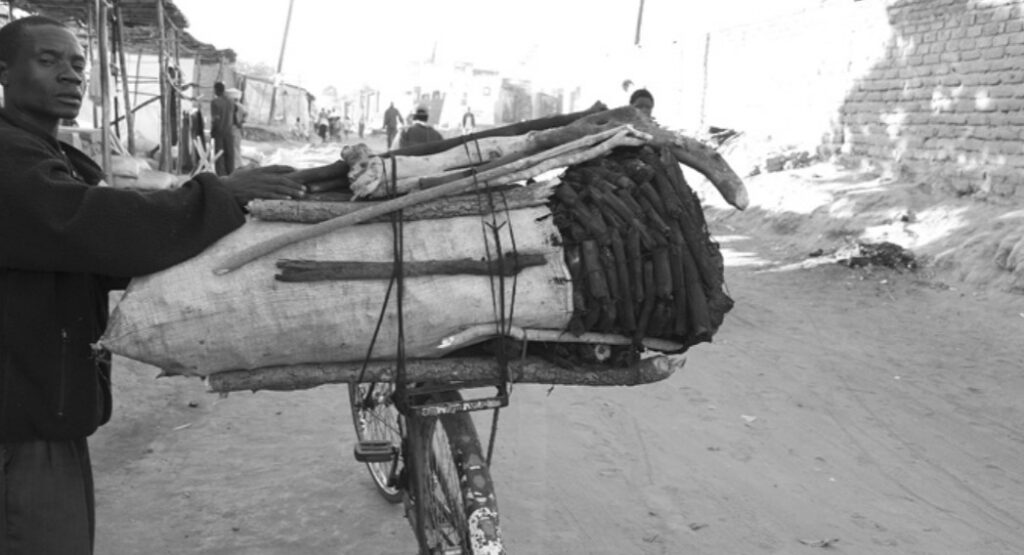The sight of men stringing along bicycles heavily loaded with bags of charcoal has become an all too familiar sight on most Malawian roads, especially in rural surrounds. These vast amounts of charcoal are not for your leisurely barbeque however. Instead they contribute as a major source of energy for 92 percent of the Southern African country’s 13 million inhabitants.
Like many other developing nations, Malawi has agreed to take the initiative on the Millennium Development Goals in the hope of reducing poverty, increasing education and the provision of basic health care. Though the vast majority of the public are aware of the goals and how they contribute to the bigger picture, very few abide by the laws as they have little or no choice on how to sustain their livelihoods.
No electric cooker
Christina is a mother of four and lives with her family in a rented hut in the outskirts of Malawi’s second city, Blantyre. In all of her 35 years, she has never had the privilege of turning on a light switch or handling an electric cooker. Her hut has no facilities for electricity or running water. Immediately outside her hut though are large steel poles that transfer electricity to Blantyre bypassing her home and many of the other huts and settlements around hers.
As a result, Christina and her family rely heavily on wood from trees that are felled in their rural surrounds. This has consequently culminated in large scale deforestation in large areas of the country. Poverty and the degradation of the environment seem to go hand in hand here and both are directly linked to the other.
“Firewood collection is a part of our routine,” says Christina. “I do not earn enough money to move into a house with electricity so my girls and I have to get up early every morning to fetch some firewood.” Asked whether she is planting anymore trees to replenish the ones she cuts, she says, “we plant vegetables and herbs that help us get through the months.”
Her youngest daughter then adds in the local language, “if we plant a tree, we’ll only come back after it’s grown to cut it again.”
With over 80 percent of Malawi’s population living in the rural countryside, firewood and charcoal have become a major, if not the only means by which most people source energy for heating and food preparation. For lighting, most households use paraffin that is not locally produced. Statistics from the Electricity Supply Commission of Malawi show that only eight percent of Malawians have access to electricity.
In recognition of this problem, the government has set aside a full month every year, where a tree planting campaign will take place. During this month, every Malawian is encouraged to plant at least one tree. The trees will be planted by schoolchildren at all levels as well as social clubs and groups. It is hoped they will not only replenish what has been lost but also assist in countering flooding during the rainy season.
Setting the example: Millenium Villages
One successful way of addressing the sustainable energy issue is through the socalled Millennium Villages. They are based on a single powerful idea: impoverished villages can transform themselves and meet the Millennium Development Goals if they are empowered with proven, powerful, practical technologies. By investing in health, food production, education, access to clean water, and essential infrastructure, these community-led interventions will enable impoverished villages to escape the extreme poverty that currently confines over 1 billion people worldwide.
James Lusuntha is a team member for one of two Millennium Village Projects in Malawi. He believes there has been significant change in the way village inhabitants plan for their lives. Village inhabitants better understand the importance of looking after themselves and their environment.
The Mwandama cluster is in the world’s only region that has seen both a rise in temperature and a drop in rainfall in recent years. These changes have led to common recurrent famines. Nearly 90 percent of people in the Mwandama Millennium Village cluster live in extreme poverty. The inhabitants of Mwandama are being used as a prototype for Malawians to learn to use resources available to them without depleting the earth’s natural resources.
Black ash
The activities at Mwandama Village are unknown to Robert, who is one of the men stinging along a bicycle heavily laden with charcoal. Every morning Robert and a hoard of other men gather charcoal that they burn through the night, and load the black ash into sacks and onto their bicycles. They travel 30 kilometers into the city to sell the sacks at a local market for about $5. According to Robert, this is the only way he can fend for his family. “People need to eat and heat up,” he says. “As long as electricity remains scarce, we will always have a job”.
An evening in Christina’s home ends with the family gathering around a lit fire from the firewood brought in by the children earlier. The warmth in this little hut is a far cry from the heat you might expect from a radiator, the lighting faint; but there is something very comforting about a family that gets by through meager resources and knows that they may perhaps never afford electricity.
While measuring carbon footprints and curbing global warming is on the agenda for many in the West, Malawians are still trying to find a way to switch a light bulb for every household in a country called the warm heart of Africa.
© www.streetnewsservice.org




